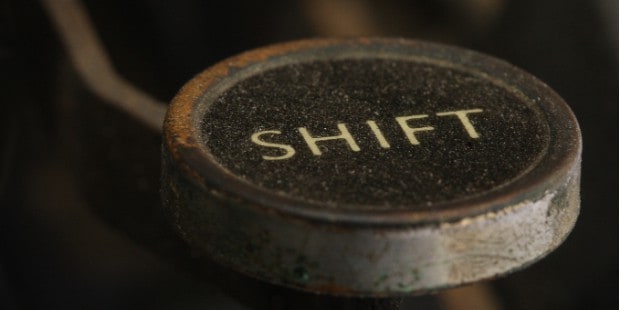 Yesterday I spoke at IdeaWave 2012, with an abridged version of a talk I’ve been working on. The talk — for the purposes of yesterday’s event — was known simply as Mindfulness 2.0, but it was only part of a broader concept that I refer to as The Productivity Shift.
Yesterday I spoke at IdeaWave 2012, with an abridged version of a talk I’ve been working on. The talk — for the purposes of yesterday’s event — was known simply as Mindfulness 2.0, but it was only part of a broader concept that I refer to as The Productivity Shift.
It runs along similar lines as this piece written by Cal Newport, but spends more time focusing on how technology is starting to adapt to the point where it isn’t there to help us create and manage our to-do lists. Instead, it is starting to take on the challenge of creating ways for us to better wrap out heads around the following (and very big) question revolving around our to-do lists:
Why?
Technology has been good at — and has gotten better at — helping us manage the tasks we either assign to ourselves or are assigned. But there hasn’t really been a mainstream method courtesy of technology that has helped us with the process of looking at why we are doing them — why they are on our to-do list in the first place.
With the advent of “smart devices”, such as smartphones and tablets, there seems to be a shift occurring that more of the mainstream can get behind: applications that can help us evaluate our lists, get better connected with our long-term goals and priorities and align our to-do lists accordingly.
Shift Happens
An app like Clear (which I am currently using as part of an experiment to see if it can fit into my workflow) breaks down a barrier for some users — those who wouldn’t even dream of using any sort of task or list manager — because of its interface. An app like Unstuck or Idea Bucket for the iPad takes things one step (or several steps) further, in that they ask us to figure out what we really want and then, through a series of questions/exercises, helps us better align ourselves with that.1
As we have become more comfortable as a society with technology and how it can connect us to others like never before, we are becoming more aware of how it can help us become better connected to ourselves as well. We’re using technology more than ever to socialize, to share our thoughts with others and to even keep track of our own thoughts (for ourselves and for future generations). Yet up until recently, technology has been used for productivity’s sake to create the ability to make more stuff, rather than make the right stuff for the user. We’ve got a “pressing button problem” here (as Nancy the Blacksmith said during her IdeaWave talk) and I think that we’re seeing many developers — who have pressed many a button while they code — recognizing this. They’re building tools like Mindbloom, which seems silly to some (who needs to be reminded to drink water) but are so vital for others (those who are so caught up in the information firehouse that they can barely stop — let alone stop to think).
If we all start to become part of The Productivity Shift, then we’ll be less concerned about Inbox Zero because we’ll realize that getting there gains us only a brief sense of relief and accomplishment. We’ll start to think of email as something we use to communicate with and not something that is used to take us away from the stuff that actually gets us somewhere. We’ll start to think further ahead rather than just to the end of the day. We’ll essentially shift our productivity into a higher — and better — gear, rather than see who can spin their wheels the fastest right where they are.
I think of this shift as what happened when more people in my part of the world started to seriously look at Eastern medicine as a viable alternative to Western medicine. Two different approaches that both were meant to achieve the same outcome: improved health. I’m not going to even say which is right or wrong — because that’s not what is up for debate here. But the ability to be able to have some new way to look at things is rarely a bad thing, and good can come from exploring both options.
Beyond IdeaWave
Of course, there was more to my talk yesterday than just this (and there’s more to The Productivity Shift than just this as well — I could write a whole book on the subject). I could go into my whole mention of intention and willpower, the battle of will against fear (where I talk about a certain superhero), and how thoughtful and mindful productivity are what will lead to a better place for everyone.
Instead, I’ll just leave with the idea that you should challenge your to-do list. Look at it and put the big question to every task on it. And if your answer isn’t clearly aligned with what you ultimately want, then get it off of that list. Give it to someone else to do, find a better way to do it or…don’t do it at all.
There’s no better time to be part of The Productivity Shift than now. Because right now — especially after reading this piece — it’s on your mind. And just like time, your mind is a terrible thing to waste. 2
Photo credit: Leo Reynolds (CC BY-NC-SA 2.0)
1That said, you need to make that call. The human element will — and should — always be there.
2I think I’ve heard that somewhere before…

